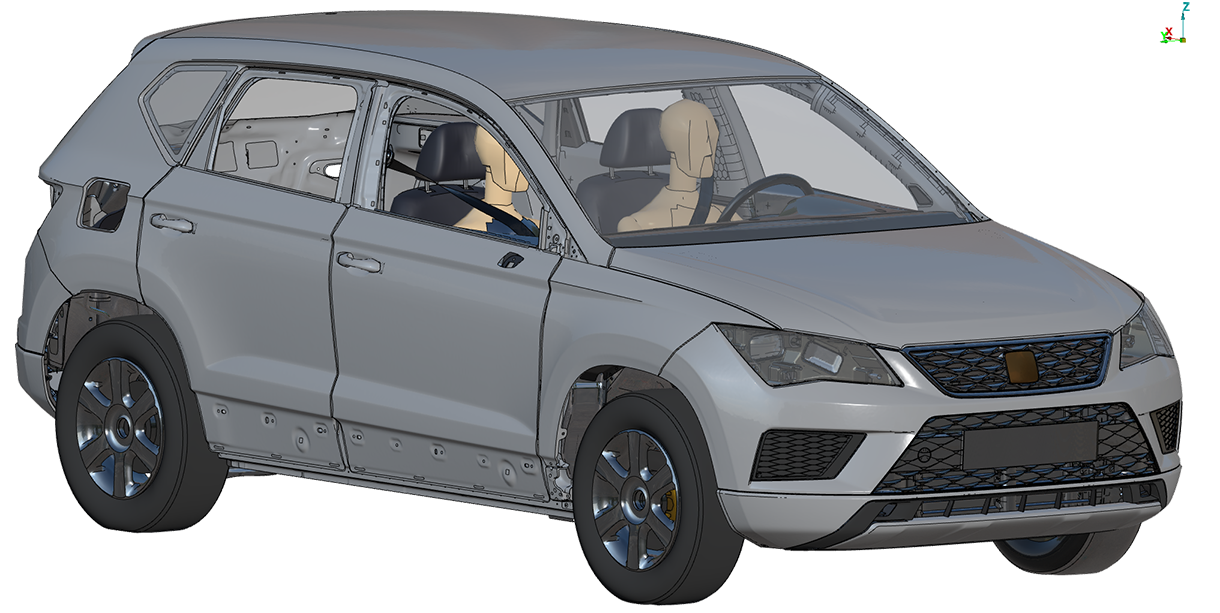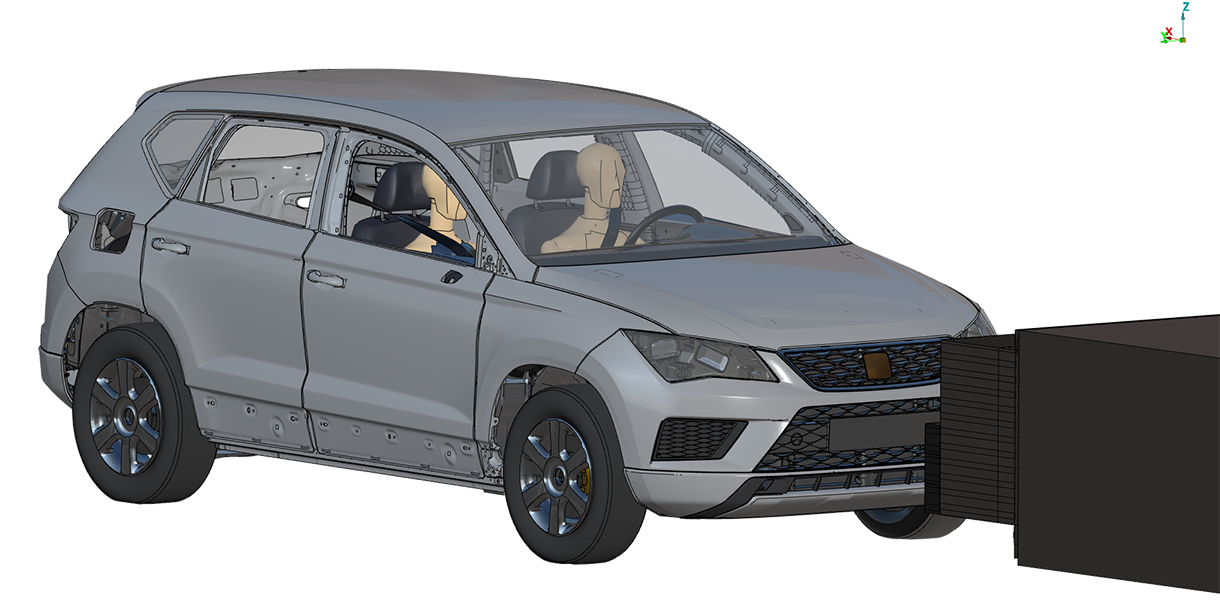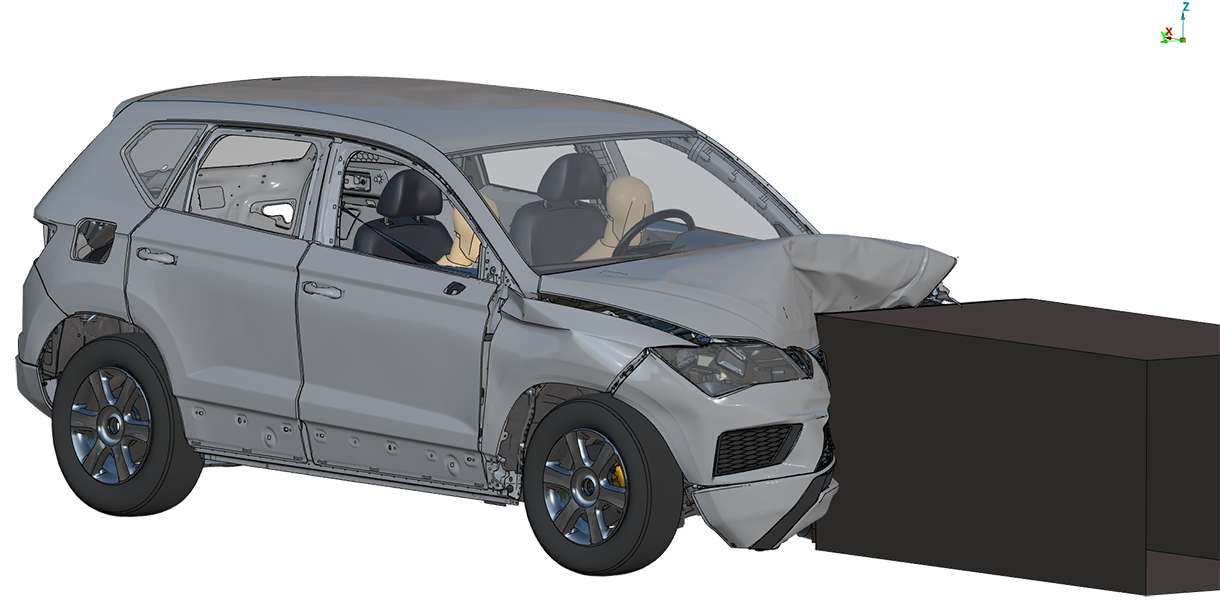High speed impact
BACKGROUND
The study of high speed impacts is carried out through finite elements simulations to guarantee the safety of the vehicle and passenger in accordance with the current regulation, while also saving costs related with carrying out physical tests.
Since 2017 SOLUTE has been using ANSA and META to develop different models in PAMCRASH, which are analysed for each type of barrier.
The simulation of tests, based on different regulations such as EuroNCAP, US NCAP or ECE-R95, contributes to studying the behaviour of the car so that, in the event of an accident, the risk of damage is minimised and the physical integrity of the passengers as well as the structural integrity of the vehicle are ensured.
In these analyses, critical components are also evaluated for operation after a forceful impact and cost savings are achieved as there is no need to carry out tests on real models.
RESULTS
Based on each test, a specific analysis is required to study the compliance with requirements such as safety, structural integrity and general behaviour of the vehicle to protect passengers and minimise damage to components.
EXPERIENCE
SOLUTE has been involved in these types of projects since 2017 for large car manufacturers, playing a role in developing a dozen cars to date.
When all the areas have been analysed separately, they are added to a common platform, with management of versions, where a complete model is assembled that must be reviewed in order to validate its proper operation.
METHODOLOGY
As in all simulation processes, 3D CAD models are used as a basis for modelling specific components, using BETA CAE as well as META or ANSA systems. In this case, as it is a much larger model that includes the full car, different parts of the generated vehicle are used by different departments.
When all the areas have been analysed separately, they are added to a common platform, with management of versions, where a complete model is assembled that must be reviewed in order to validate its proper operation.
Once validated, all the load cases are created, where the test conditions such as the type of barrier, impact speed, specific version of the model or other specific parameters are described.
These PAMCRASH simulations are carried out at the infrastructures provided by the customer, with exchanging of files as well as servers and virtual machines. The obtained results are post-processed using two essential tools; META and Animator.
Finally, the technical notes that document each load case are generated, such as the study of the vital space inside the compartment, the breaking of the weld points, the loss of adhesive areas, the failure of structural components, intrusions in the battery area or deceleration curves.
Wind
Energy and weather forecast for renewable operators
Weather and energy forecast service through the training of artificial intelligence algorithms.
Software
Backend
Backend development is the part of an application that manages the information provided by the user and which controls the processes that manipulate this information to obtain the required results.


